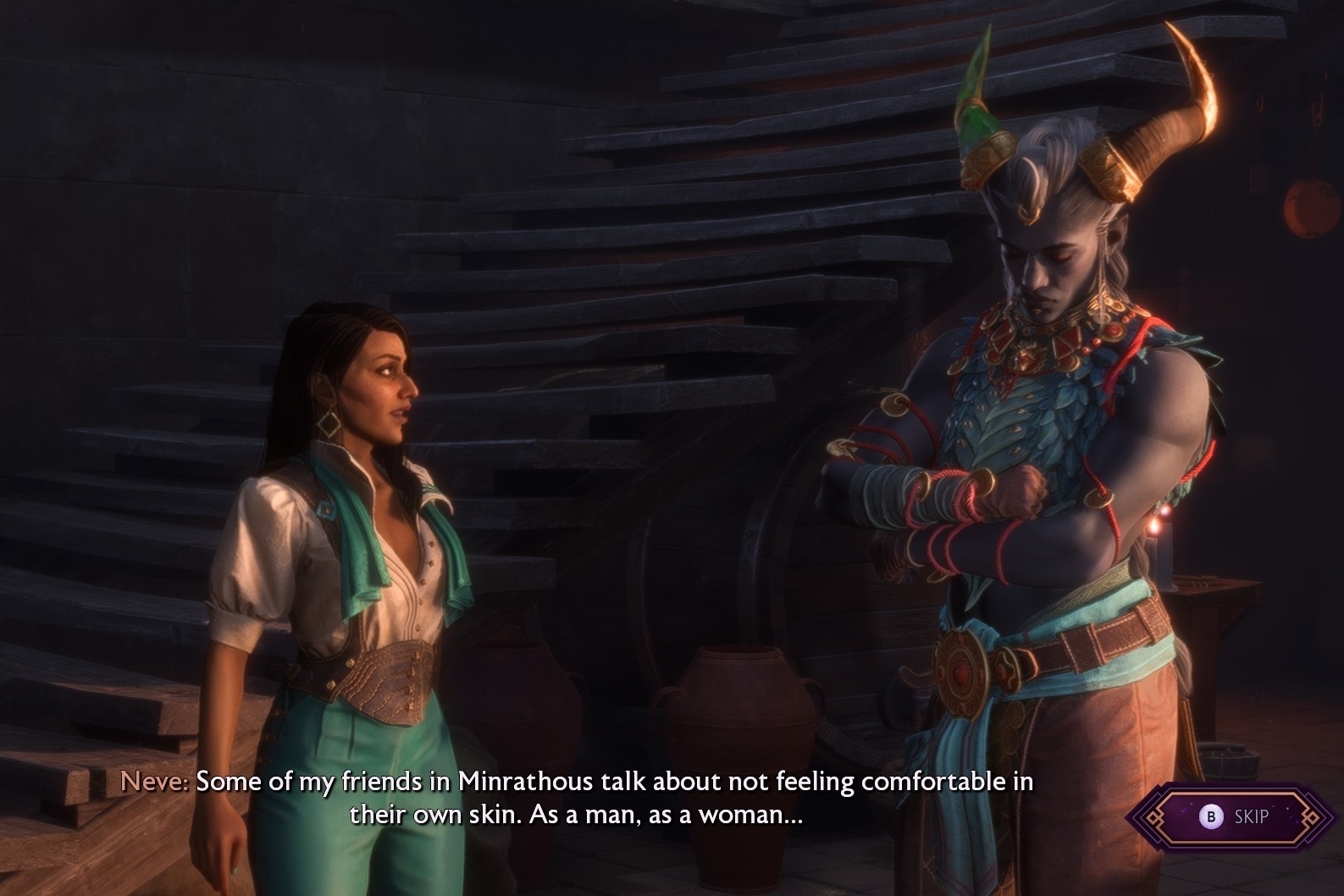Dragon Age: The Veilguard review: A reluctant RPG, but a compelling, heartfelt action adventure
You couldn't make Dragon Age: Origins today! (because there's been several sequels already)
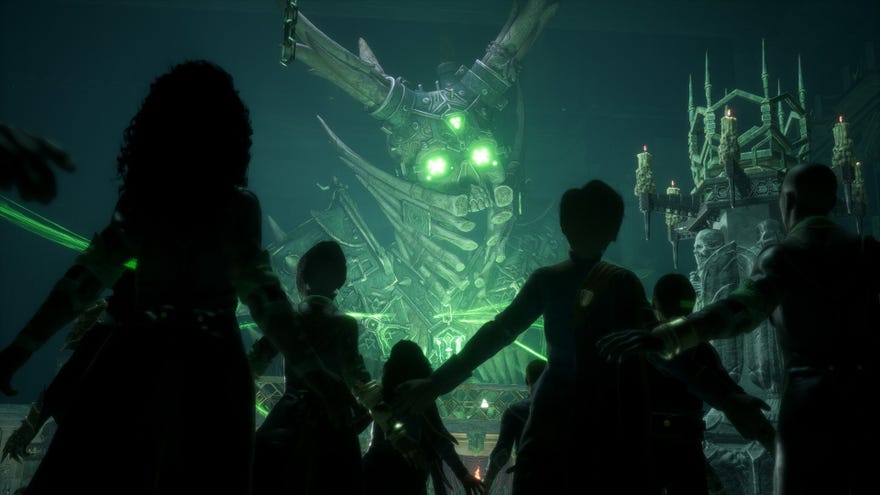
If there’s one thing I’d like to get across about my time with
Dragon Age: The Veilguard - perhaps a surprise given Bioware’s recent history,
Anthem, and some of the early marketing for this game - it’s that in my 50 hour return to Thedas, I very rarely felt I was playing something cynical.
Occasionally puppyish in its eagerness? Sure. Adhering to trends, some so bafflingly quaint as actual ballista turret sections? Absolutely. If Veilguard can be called an
RPG (“chatty action adventure” is where I’d land) it’s a reluctant one, even if some of that reluctance works in its favour.
A couple Bioware bangers aside, roleplaying and decisions feel limited - an understandable casualty in service of a cohesive mood and plot, though only in hindsight. A few, early choices (leave the bad man to die, or don’t) hinted toward options to play my character, Rook, as anything spicier than an occasionally conflicted boy scout. This was a lie - or else the remnants of an earlier, more ambitious build. I ended up liking Rook a great deal, but Thedas can feel small at times. Most choices are about the team, rather than the world. And even then, few are wider reaching than “support friend” or “support friend (sarcastic)”.

Image credit: Bioware/Rock Paper Shotgun
This all aside, there is such heart and enthusiasm at Veilguard’s core, and such effort taken to build up - over tens of hours - to the most spectacular, uniquely Bioware finale since
the spectacular Bioware finale, that I rolled credits with no doubt that the folk behind Veilguard cared deeply about what they were making. I ended up caring too, even if it took me longer than I’d have liked.
That’s because almost everything Veilguard does - from characters to combat to exploration - only start to get interesting about eight hours in. The spaces you initially spend the most time in feel unmoored from the blood and dirt of Thedas. Your ethereal lighthouse base floats in a purplish void - the liminal, highest-of-high-fantasies antithesis to Inquisition’s frozen medieval Skyhold. Save the world? Sure thing, but it’s been a decade. Depending on which order you tackle quests, it can be a long while before you get a sense of the world you’re saving.
Multiple consequential, lore-dense plotlines that aren’t fully relevant until much later are introduced while you’re still getting your bearings. I begged for a single scene of someone noisily smashing a chicken leg and a pint in a dingy tavern. A basement of rats to kill, as a treat. Just something to ground me in the mundane sinew of Thedas rather than its fluffier concerns, hours before the game gave me genuine cause to feel invested.
That's also how long it took me to get over how popular botox apparently is in Thedas these days. Faces are stiff, teeth are unnervingly white, and everyone you meet is just that little bit too filtered; too perfect. I don’t need an unending parade of ragged, wretched souls. Just, y’know, maybe a single person who looks like they’ve gone a day without mainlining moisturiser. Later on, Veilguard showed me captives excruciated by blood magic and blight-festered battlegrounds, dusky mediterranean markets and lavish, crumbling architecture. This is a world with wrinkles and stress lines, yet bizarrely inhabited by skincare influencers.
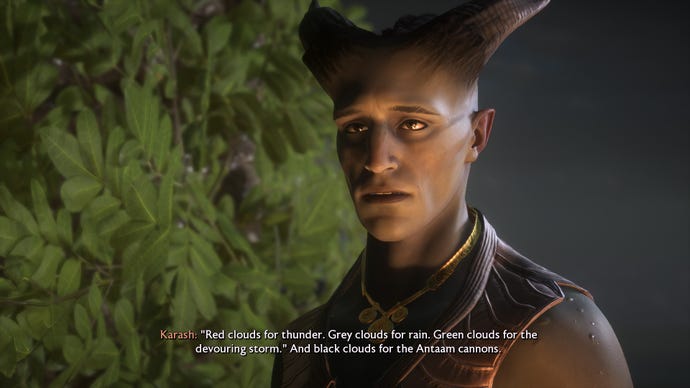
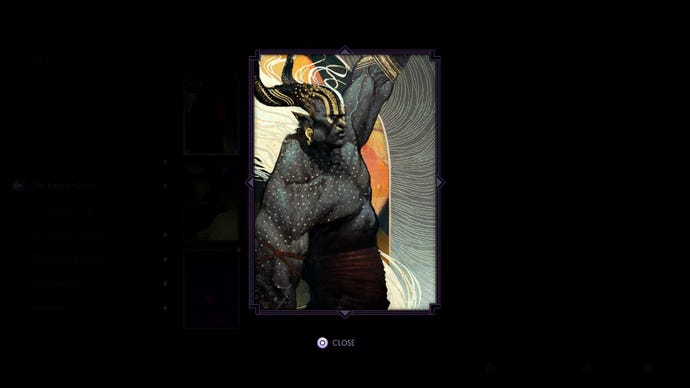
Image credit: Bioware/Rock Paper Shotgun
This is especially frustrating because DA’s secondary art styles are so incredible. The lean, rich arcana that show up for collectibles and some cutscenes here, and the fantasy art deco found in Veilguard’s sets, costumes, and architecture just feel so much more deliberate and defined than the character designs. Tesselated shapes woven into armour pieces. Ornate booze bottles lining the shelves of bars. Gothic chandeliers in ornate necropolises. It’s a rare and special thing to play an AAA game with environmental flourishes this consistent - and so equally tragic to see other elements so flattened, smoothed and saturated. And if blemishless uniformity is an issue for the people, you can imagine what it does to the darkspawn.
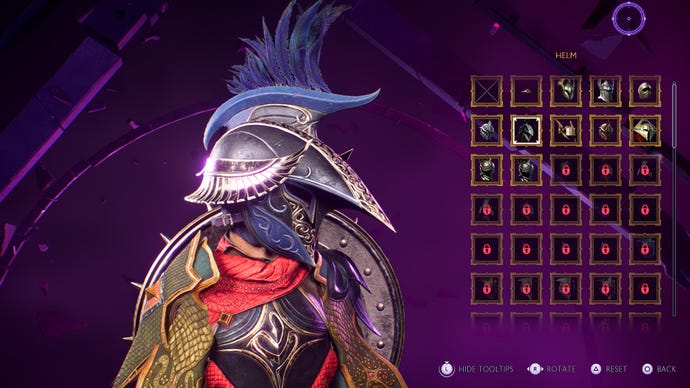
You can glamour armour based on what you’ve collected or bought. Many armour pieces are beautiful, intricate bits of fashion design, and every helmet looks stupid as fuck. | Image credit: Bioware/Rock Paper Shotgun
The character’s stiffness and nuclear-glow-ups also undermine some fantastic voice performances. You won’t be surprised, I’m guessing, to hear that Solas retains his place as the elven god of scene stealing whenever he pops up, silver tongued and soft lilted. His dialogue and revelations, especially, are a real highlight. Elven lore fans, you’re in for a treat. If you’re open minded, you might even find he makes some good poi…wait.
Mum! He’s doing it again!
But I absolutely didn’t expect my favourite voice performance to end up being my Rook (masculine voice 1). This, and Rook’s writing, made for a character I was genuinely on board with. It’s something worth asking of any game with dialogue choices that only gesture at what’s actually spoken after: is there tension between me and my character? When I pick my prompt and they speak it, do I cringe and shout “no, that’s not what I meant!”? With Veilguard, it was mostly “yes. Yes. That is exactly what I would say here, were I cool and decisive and also a hot elf”. Aspirational roleplaying, another Bioware special.
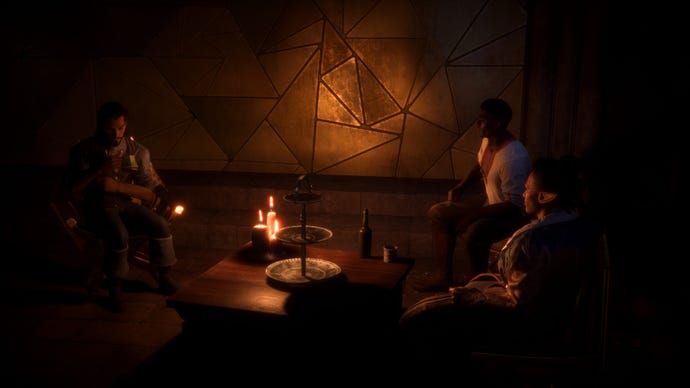
Once I noticed Veilguard's love of geometric flourishes, I started seeing them everywhere. | Image credit: Bioware/Rock Paper Shotgun
What’s definitely aspirational is the backflip-while-shooting-an-arrow dodge my rogue Rook simply would not stop delighting me with, even after I’d performed it half-a-hundred times. Combat here sits somewhere between the more measured slash, parry, and stagger of God Of War (2018), the prime-and-detonate team coordination of Mass Effect 3, with some buff stacking and weakness exploitation that, again, feel more like concessions to RPGs than a convincing synthesis. Limp glory kills, ability cooldowns, and mighty supers complete the bingo card. It’s frequently satisfying, and it certainly makes the characters look cool, but it does feel like a pastiche of other, more confident systems. That said, it fits here in ways I don’t reckon another grudging shot at Inquisition’s “fine, have your tactical view, you decrepit Baldur’s Gate purists” would have.
It hits its stride about halfway through, then stumbles and eventually plods. I ended up lowering enemy health, since I’d seen every combination of foes in the game a dozen times and just wanted to get through fights quicker. There is, I dare say, a reason why combat like this is usually found in fifteen hour action games, not 50-100 hour natterthons. Parrying feels great, but fights are so visually noisy I’d often have to strain my eyes to pick out the Arkham/Spiderman ‘bonk incoming’ warnings in among the elemental crackles,
ranged bonk incoming warnings, and big red “don’t fucking stand there, you muppet” circles.
That said, the classes are very distinct - or, at least, the fighter is from the rogue. Throw equipment effects in the mix, and there’s some varied buildcraft that becomes more relevant and interesting the higher the difficulty. I especially liked how no weapon or armour piece becomes useless, instead upgrading as you collect duplicates. You can’t sell them, but instead of ending up with a bag o’ jangly crap, you get differently useful loadout options. Overall, combat is engaging in flashy sprints - sometimes balletic in tandem with pause-to-listen soundtrack bangers - it just isn’t robust enough to last the marathon.
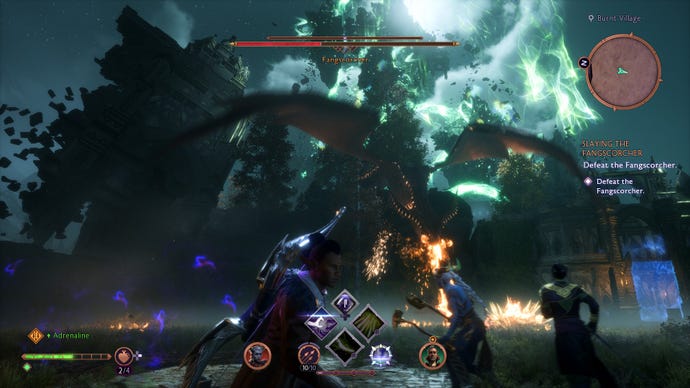
Image credit: Bioware/Rock Paper Shotgun
And a marathon it is, because combat’s also the main way you interact with the world. You’ve got environmental non-puzzles - locate the thing-zles, basically. You can have ambient conversations with townsfolk and vendors, some obligatory dog bothering, but I was itching for a card game or side activity like Inquisition’s throne room. The closest thing here is, uh, a combat arena. There are endless conversations that depict
Rook hanging with the team, but nothing to facilitate
you hanging out in Thedas. It can make the world feel utilitarian, almost laminated in its resistance to being touched and felt.
You want questlines? Companions, factions, and regions all have some, each contributing to the ending in some form. This is mostly through completion percentages (“faction strength”) rather than story decisions. Again, a utilitarian approach. Still, Mass Effect 2 wasn’t too dissimilar, and it
is a very good ending. I also really appreciated the map design. Spaces are easy to navigate but also feel slightly confusing in a naturalistic sense, with areas that seem small opening up to multiple other paths and plateaus.
There is so much else that is impressive and charming about Veilguard. The absurdly elaborate and expensive finales that cap off companion questlines; lavish, unique areas rolled out for a visit or two then never again. How story moments of real threat and menace stopped me in my tracks, because it turned out that Bioware wasn’t disinterested in this stuff, just saving it for when it really counted. The fantastic prose and worldbuilding in the huge glossary, filled as you find notes and items.
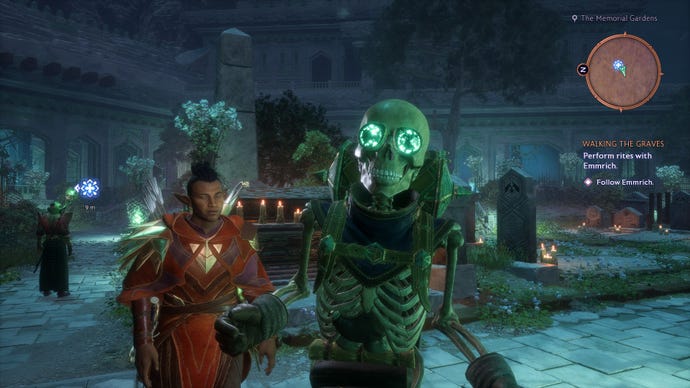
Mom said it's my turn to play Xbox. | Image credit: Bioware/Rock Paper Shotgun
Quite early on, during those hours where I still wasn’t sold on the game, and every note I took was a criticism, I had a conversation with dwarf scout Harding where she reminisced on her time with the Inquisition. She’d mention characters - Cassandra, Sera, Cole, Leliana - and all I could think about was how much I’d rather be spending time with them than a cast who, at that time, felt underdeveloped, uncharismatic, and uninteresting.
And, sure, some companions take longer to warm to than others. “I fix magical artefacts! It’s kind of my thing!” Please don’t tell me what your thing is, magic artefact elf lady - I will learn what your thing is by observing you doing that thing. But as I played on, I’d sometimes think back to that conversation, and I’d notice how much Veilguard’s crew had grown on me. I’m not sure if I’ll end up missing them the same way in whatever form Dragon Age takes next, but it’s a very pleasant surprise to even be considering it.
This review is based of a review code provided by the developer. I was going to cover romance but that developer is Bioware. You know how it works by now, I’m sure. (Taash, obviously.)


































